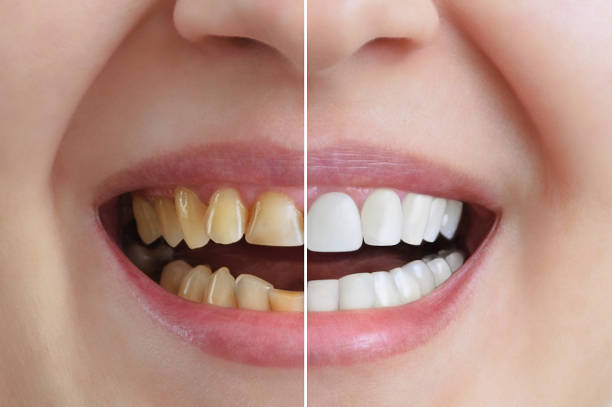Tooth Inlays/Onlays: The Procedure and Indications in Lansing, MI

Treatment and whitening of teeth, dental crowns. Before and after. Dentistry. Close-up.
What are Tooth Inlays and Onlays?
The form, function, and aesthetics of the tooth are restored with dental onlays and inlays, which are long-lasting partial coverage restorations created in a dental laboratory and cemented over the prepared tooth surface. Composite resin, gold, or porcelain can be used for inlays and onlays. These components are cemented to the tooth’s affected region. We will discover the purpose and method of inlays and onlays in cosmetic dentistry in Lansing, MI in this blog post.
An inlay is placed into the tooth’s cusp points and functions similarly to a filling. Similar to an inlay but covering one or more of the tooth’s cusps, an onlay is a more thorough restoration. The materials used to create these high-strength indirect restorations are usually gold alloys or ceramic/porcelain composites. Visible inlays and onlays will match your natural tooth color in color so you may keep your smile looking natural.
Indication of Inlays and Onlay
Since they only need a small amount of tooth material to be removed, partial coverage inlays and onlays are a more conservative restorative option than full coverage dental crowns. Whereas a dental onlay is positioned “on” or over the tooth, an inlay is positioned “in” the tooth.
Teeth that are somewhat worn down or fractured are intended candidates for inlays. Onlays, on the other hand, are made to replace more of the tooth to provide even more protection.
Premolar and molar teeth, which experience intense chewing and grinding pressures, are ideal candidates for inlays and onlays. Teeth that have fractured or received mild damage from an accident or athletic injury can also be repaired with inlays and onlays.
Process of Inlay/Onlay Application
The process of inlays and onlays takes two sessions to finish. The tooth is prepped for the inlay or onlay at the initial appointment, which also involves replacing the filling or extracting the tooth’s decayed or damaged portion. The dentist takes an impression of the tooth, which is then sent to a lab for manufacturing to guarantee an ideal fit and bite.
After that, the dentist will make an appointment and seal the tooth with a temporary sealant.
The temporary sealant is taken off at the second visit. The dentist will next check to make sure the onlay or inlay fits properly. The inlay or onlay will be glued to the tooth using a strong resin and polished to a smooth finish if the fit is acceptable.
Inlays and onlays can increase the strength of the tooth by 75%. They may last up to 30 years. It is important to discuss the process and longevity of this appliance with your dentist if you are considering getting it done